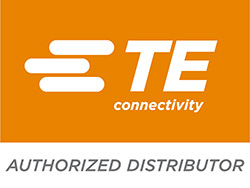TE Connectivity Barrier Strip, 2 Contact, 6.35mm Pitch, 1 Row, 10A, 300 V
- RS Stock No.:
- 501-664
- Mfr. Part No.:
- 1546657-2
- Brand:
- TE Connectivity

Subtotal (1 bag of 200 units)*
£154.44
(exc. VAT)
£185.33
(inc. VAT)
FREE delivery for orders over £50.00
Temporarily out of stock
- Shipping from 12 January 2026
Need more? Click ‘Check delivery dates’ to find extra stock and lead times.
Bag(s) | Per Bag | Per unit* |
|---|---|---|
| 1 + | £154.44 | £0.772 |
*price indicative
- RS Stock No.:
- 501-664
- Mfr. Part No.:
- 1546657-2
- Brand:
- TE Connectivity
Specifications
Technical Reference
Legislation and Compliance
Product Details
Find similar products by selecting one or more attributes.
Select all | Attribute | Value |
|---|---|---|
| Brand | TE Connectivity | |
| Number of Contacts | 2 | |
| Pitch | 6.35mm | |
| Body Orientation | Vertical | |
| Contact Material | Brass | |
| Contact Plating | Tin | |
| Number of Rows | 1 | |
| Current Rating | 10A | |
| Voltage Rating | 300 V | |
| Select all | ||
|---|---|---|
Brand TE Connectivity | ||
Number of Contacts 2 | ||
Pitch 6.35mm | ||
Body Orientation Vertical | ||
Contact Material Brass | ||
Contact Plating Tin | ||
Number of Rows 1 | ||
Current Rating 10A | ||
Voltage Rating 300 V | ||
- COO (Country of Origin):
- TW
The TE Connectivity 2 Position Barrier Strip is designed to facilitate efficient wire-to-board connections in your circuit design. Engineered for optimal performance, this dual barrier connector features printed circuit pin bottom termination, ensuring secure and reliable attachment to the printed circuit board. With a centreline of 6.35 mm, this product is perfectly suited for both compact and extensive applications. Its robust construction, combined with high operational voltage capabilities of up to 300 V, makes it the ideal choice for a variety of power circuit applications. This barrier strip offers a streamlined solution for managing two positions in a single row, presenting an excellent choice for your electronic hardware needs.
Optimised for wire-to-board connections for enhanced electrical reliability
Dual barrier design ensures maximum protection against interference
Vertical orientation supports efficient use of space within enclosures
Constructed from durable thermoplastic material for long-lasting performance
Can accommodate a wide range of wire sizes from 30 to 16 AWG, offering versatility
Designed to operate effectively across an impressive temperature range
Compatible with wave soldering processes, simplifying assembly
Features a high current rating, supporting the demands of power applications
Dual barrier design ensures maximum protection against interference
Vertical orientation supports efficient use of space within enclosures
Constructed from durable thermoplastic material for long-lasting performance
Can accommodate a wide range of wire sizes from 30 to 16 AWG, offering versatility
Designed to operate effectively across an impressive temperature range
Compatible with wave soldering processes, simplifying assembly
Features a high current rating, supporting the demands of power applications
Related links
- TE Connectivity Barrier Strip 6.35mm Pitch 10A, 300 V
- TE Connectivity Barrier Strip 6.35mm Pitch 10A, 300 V
- TE Connectivity Barrier Strip 6.35mm Pitch 10A, 300 V
- TE Connectivity Barrier Strip 6.35mm Pitch 10A, 300 V
- TE Connectivity Barrier Strip 8.26mm Pitch 10A, 300 V
- RS PRO Barrier Strip 6.35mm Pitch Solder Termination
- TE Connectivity Barrier Strip 13.5mm Pitch 40A, 300 V
- TE Connectivity Barrier Strip 9.53mm Pitch 20A, 300 V
